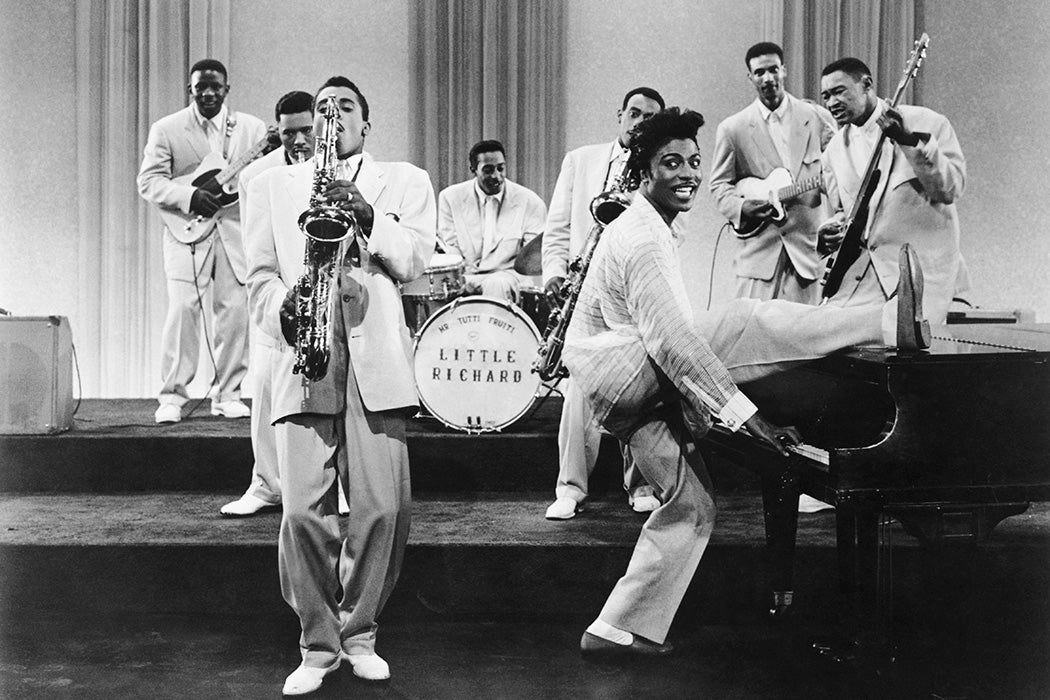There was a time they seemed like a perfect couple. No one could tell where one ended and the other began, a perfectly intertwined match. It seemed as if they’d go on forever. But in 1957, they broke up. Or, more accurately, they were split apart. Rock and R&B. The end of an era. Divorced.
Blame changing tastes, or changing ideas, or Billboard magazine, which, in 1957, included in a notice of the split, noting that “[r]ock and roll, which is now identified virtually as a distinct idiom, produced its own share of artists.” But as media scholar Lawrence N. Redd, points out, “no rationale was offered to explain how rock became a ‘distinct idiom.’” So was this musical pairing severed for no good reason? Why and how did rock and R&B become different genres?
The short answer is race, but like many things, the long answer is complex. As music writer Arnold Shaw explains, R&B went through a lot of changes before becoming R&B. Rhythm and Blues, or R&B, “came into vogue in June 1949 when…Billboard substituted it for Race, the term that had been in use since 1920 to describe [B]lack records made by black artists.”
“Race music” would have included anything from jazz to vaudeville to opera, as long as it was performed by Black artists and marketed to Black buyers; style didn’t really matter. The shift to R&B was as much the result of the performers as the media. As Shaw points out, record producer Johnny Otis was one of the early proponents of R&B, noting, “By ’48 or ’49, it [R&B] was set—we had an art form, though we didn’t know it then.”
So while the artists knew they were producing something “outside” of rock, there was still some agreement that the music shared a common family tree. As Redd explains, “references to the music in the early 1950s indicate that the two terms were used interchangeably.”
But when the split happened, it meant that rock could be used as a marketing descriptor as much as a genre.
“Decision-makers in radio, film, and television have used telecommunication to help create a false dichotomy within the music,” Redd writes. These sorts of false dichotomies would lead to one genre being considered white, the other Black. This is a perception, Redd notes, that “persists in many quarters [and] this double vision contributes to American cultural instability and racial divisiveness.”
This split, he adds, does have some roots in the social structure of the United States. People were segregated, both through law and through practice, and “[i]t was perhaps a natural step for the white decision-makers of the recording industry to develop a system of segregating records according to the race of the performers.”
As musical styles like urban blues and bop began to appear in the 1940s, it felt ridiculous to put all of those under the umbrella of “race music” simply because the artists were all Black. Although the term may have gone away, in the ’40s, “the idea of segregating the music of [B]lack performers had become well ingrained within the American psyche,” Redd writes.
Though radio made it easier for all listeners to hear all kinds of music, by the 1950s, many of these same stations were again using the terms “R&B” and “rock” interchangeably. DJ Alan Freed’s “Rock and Roll Show” played R&B. And though Freed is credited with popularizing the term as a genre, “[t]he lyrics of rhythm and blues songs are replete with references to ‘roll and rock’ or ‘rocking and rolling,’” Redd writes. Some of these date back as far as the 1920s. Freed himself even saw the genres as the same, frequently using both terms because, “he believed they represented the same music.”
Weekly Newsletter
The recording industry likely played the biggest role in the severing of the genres from each other, though. Some artists were just easier sells to the general public. As Redd writes, “It is reasonable to speculate that large white record companies wanted no ‘race music’ labels (including rhythm ‘n’ blues) attached to their enormously profitable white artists.” Rock as a genre helped solve that “problem.”
These sorts of divisions still linger. As cultural anthropologist Maureen Mahon points out, “race, ethnicity, gender, class, and nationality influence which genre an artist is slotted into, and genre shapes the ways in which an artist is marketed to audiences as well as the creative parameters within which an artist is expected to work.”
Editor’s Note: A sentence identifying Italian American musician Sonny Dae as Black was deleted from this story.
Support JSTOR Daily! Join our membership program on Patreon today.







